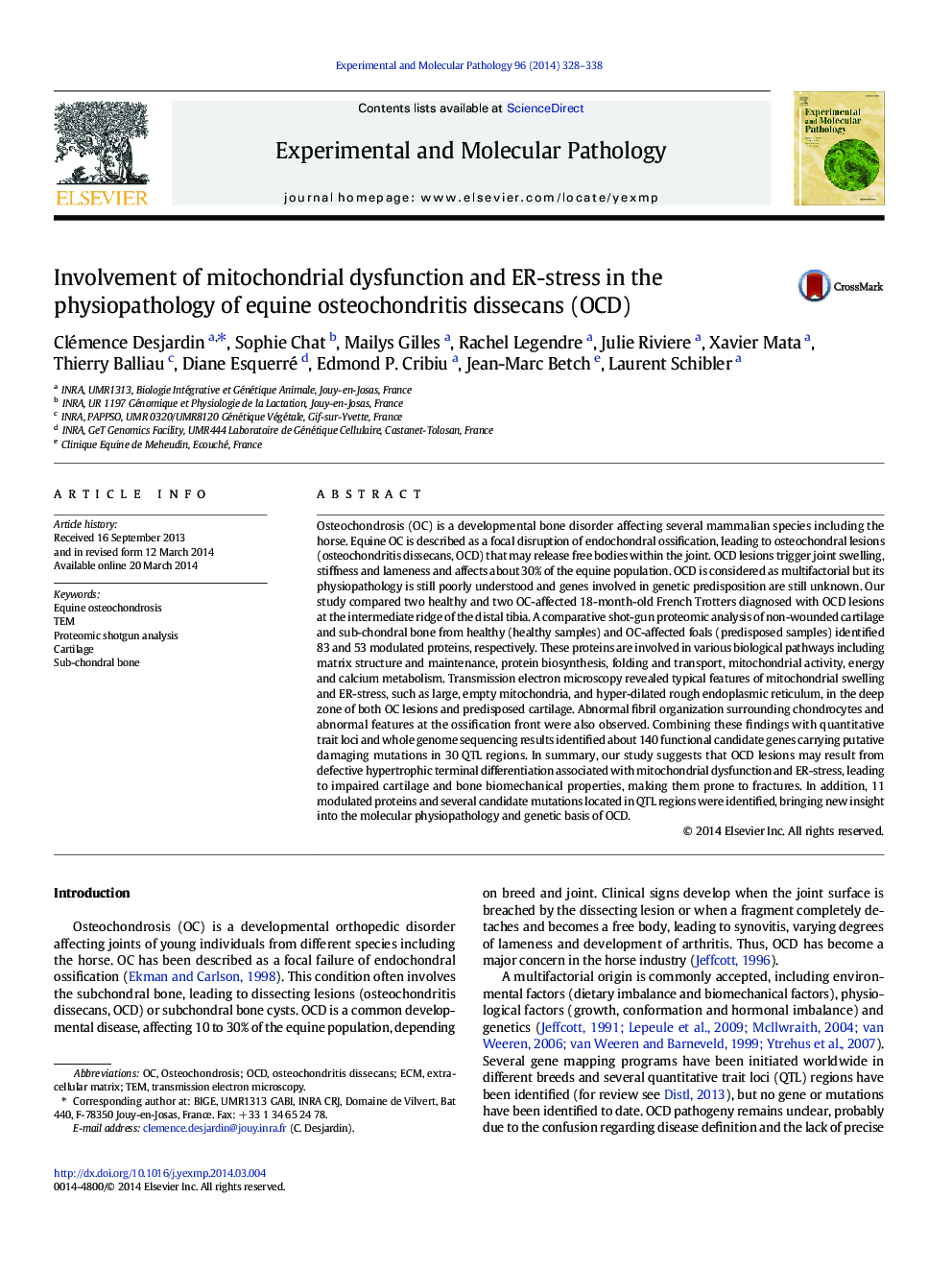| Article ID | Journal | Published Year | Pages | File Type |
|---|---|---|---|---|
| 2775111 | Experimental and Molecular Pathology | 2014 | 11 Pages |
•Comparison of bone and cartilage from healthy and OC-affected foals with OCD lesions•Abnormal mitochondria and endoplasmic reticulum in the deep zone of OC cartilage•Differentially expressed proteins in bone and cartilage from healthy and OC-foals•Mitochondrial dysfunction and ER-stress lead to OCD lesions.
Osteochondrosis (OC) is a developmental bone disorder affecting several mammalian species including the horse. Equine OC is described as a focal disruption of endochondral ossification, leading to osteochondral lesions (osteochondritis dissecans, OCD) that may release free bodies within the joint. OCD lesions trigger joint swelling, stiffness and lameness and affects about 30% of the equine population. OCD is considered as multifactorial but its physiopathology is still poorly understood and genes involved in genetic predisposition are still unknown. Our study compared two healthy and two OC-affected 18-month-old French Trotters diagnosed with OCD lesions at the intermediate ridge of the distal tibia. A comparative shot-gun proteomic analysis of non-wounded cartilage and sub-chondral bone from healthy (healthy samples) and OC-affected foals (predisposed samples) identified 83 and 53 modulated proteins, respectively. These proteins are involved in various biological pathways including matrix structure and maintenance, protein biosynthesis, folding and transport, mitochondrial activity, energy and calcium metabolism. Transmission electron microscopy revealed typical features of mitochondrial swelling and ER-stress, such as large, empty mitochondria, and hyper-dilated rough endoplasmic reticulum, in the deep zone of both OC lesions and predisposed cartilage. Abnormal fibril organization surrounding chondrocytes and abnormal features at the ossification front were also observed. Combining these findings with quantitative trait loci and whole genome sequencing results identified about 140 functional candidate genes carrying putative damaging mutations in 30 QTL regions. In summary, our study suggests that OCD lesions may result from defective hypertrophic terminal differentiation associated with mitochondrial dysfunction and ER-stress, leading to impaired cartilage and bone biomechanical properties, making them prone to fractures. In addition, 11 modulated proteins and several candidate mutations located in QTL regions were identified, bringing new insight into the molecular physiopathology and genetic basis of OCD.
